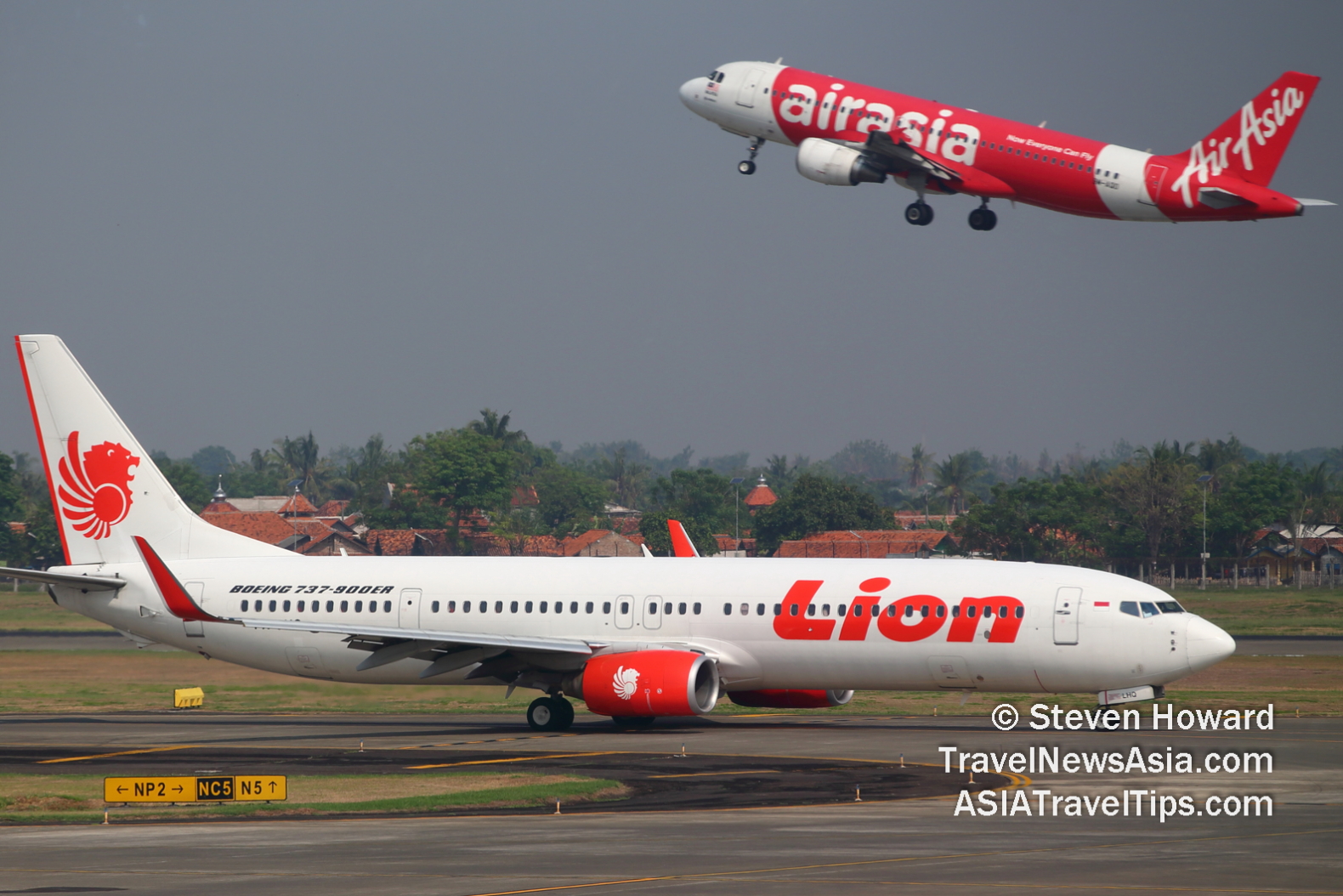|
(11 Mar 2022, 11:46 +07)
IATA has reported that the recovery in both
domestic and international air travel slowed in January 2022.
Total demand for air travel in January, measured in revenue passenger kilometers
(RPKs), was up 82.3%
compared to January 2021, but down 4.9% when compared to
December 2021.
Domestic air travel in January was up 41.5% compared
to January 2021, but fell 7.2% when compared to December 2021.
International RPKs rose 165.6% versus January 2021,
but fell by 2.2% month-on-month between December 2021 and January
2022.
Despite the strong traffic growth recorded in
January 2022 compared to a year ago, passenger demand remains far
below pre-COVID19 levels. Total RPKs in January were down 49.6%
compared to January 2019 while international traffic was down 62.4%,
with domestic traffic off by 26.5%.

Aircraft at Soekarno�Hatta Int. Airport (CGK) in Jakarta, Indonesia. Picture by Steven Howard of TravelNewsAsia.com
�The recovery in air travel continued in January,
despite hitting a speed bump called Omicron,� said Willie Walsh,
IATA�s Director General. �Strengthened border controls did not
stop the spread of the variant. But where population immunity was
strong, the public health systems were not overwhelmed. Many
governments are now adjusting COVID19 polices to align with those
for other endemic viruses. This includes lifting travel
restrictions that have had such a devastating impact on lives,
economies and the freedom to travel.�
Asia-Pacific airlines saw their January
international traffic climb 124.4% compared to January 2021, down
significantly from the 138.5% gain registered in December 2021
versus December 2020. Capacity rose 54.4% and the load factor was
up 14.7 percentage points to 47%, still the lowest among
regions.
European carriers� January international traffic
rose 225.1% versus January 2021, which was up slightly compared to
a 223.3% increase in December 2021 versus the same month in 2020.
Capacity rose 129.9% and load factor climbed 19.4 percentage
points to 66.4%.
Middle Eastern airlines had a 145% demand rise
in January compared to January 2021, well down compared to the
178.2% increase in December 2021, versus the same month in 2020.
January capacity rose 71.7% versus the year-ago period, and load
factor climbed 17.5 percentage points to 58.6%.
North American carriers experienced a 148.8%
traffic rise in January versus the 2021 period, significantly
decreased versus the 185.4% rise in December 2021 compared to
December 2020. Capacity rose 78%, and load factor climbed 17
percentage points to 59.9%.
Latin American airlines saw a 157% rise in
January traffic, compared to the same month in 2021, an upturn
over the 150.8% rise in December 2021 compared to December 2020.
January capacity rose 91.2% and load factor increased 19.4
percentage points to 75.7%, which easily was the highest load
factor among the regions for the 16th consecutive month.
African airlines� traffic rose 17.9% in January
2022 versus a year ago, a slowdown compared to the 26.3%
year-over-year increase recorded in December 2021. January 2022
capacity was up 6.3% and load factor climbed 6 percentage points
to 60.5%.
Domestic Markets
Japan�s domestic demand was 107%, which was the
fastest year-on-year growth recorded, although on a seasonally
adjusted basis, January 2022 traffic slipped 4.1% from December.
India�s domestic RPKs fell by 18% year-on-year in
January , which the biggest decline recorded for any of the
domestic markets tracked by IATA. On a month-on-month basis,
seasonally adjusted RPKs dropped by nearly 45% between December
and January.
Russia-Ukraine Conflict
January figures do not include any impact from the
Russia-Ukraine conflict which began at the end of February. The
resulting sanctions and airspace closures are expected to have a
negative impact on travel, primarily among neighboring countries.
The Ukraine market accounted for 3.3% of European
passenger traffic and 0.8% of global traffic in 2021.
The Russian international market represented 5.7%
of European traffic, excluding Russia's domestic market, and 1.3% of
global traffic in 2021.
Airspace closures have led to rerouting or
cancellations of flights on some routes, mostly in the Europe-Asia
but also in Asia-North America market. This impact is mitigated
owing to greatly diminished flight activity since borders in Asia
were largely closed owing to COVID19. In 2021, RPKs flown between
Asia-North America and Asia-Europe accounted for 3%, and 4.5%,
respectively, of global international RPKs.
The sudden spike
in fuel prices also is putting pressure on airline costs.
�When we made
our most recent industry financial forecast last autumn, we
expected the airline industry to lose $11.6 billion in 2022 with
jet fuel at $78/barrel and fuel accounting for 20% of costs. As of
4 March, jet fuel is trading at over $140/barrel. Absorbing such a
massive hit on costs just as the industry is struggling to cut
losses as it emerges from the two-year COVID19 crisis is a huge
challenge. If the jet fuel price stays that high, then over time,
it is reasonable to expect that it will be reflected in airline
yields,� said Walsh.
|
Headlines: |
|
|
